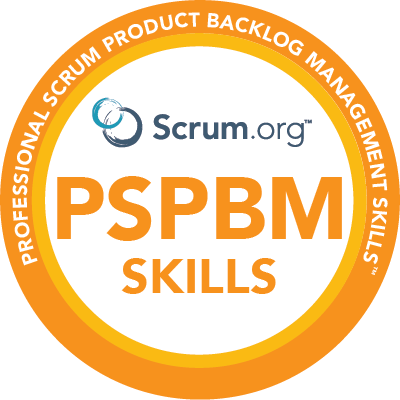 I spend a lot of time talking to organizations that are adopting Scrum. They are applying the ideas of Scrum to deliver more value to their customers faster and with higher quality. Some organizations are in finance, others in consumer packaged goods or manufacturing. Their problem domains vary significantly, as do the composition of their teams and the nature of their products. But one challenge unifies them all: managing a Product Backlog.
I spend a lot of time talking to organizations that are adopting Scrum. They are applying the ideas of Scrum to deliver more value to their customers faster and with higher quality. Some organizations are in finance, others in consumer packaged goods or manufacturing. Their problem domains vary significantly, as do the composition of their teams and the nature of their products. But one challenge unifies them all: managing a Product Backlog.
Why is the Product Backlog so important?
The Scrum Guide 2020 describes the Product Backlog as, "The single source of work undertaken by the Scrum Team." In a nutshell, the Product Backlog is the one source describing what the Scrum Team(s) will be working on. That is important to the Scrum Teams, stakeholders, and the organization. If it is not in the Product Backlog, the Scrum Team should not be working on it.
Some telltale signs of a lousy Product Backlog
In a recent blog, the following signs were listed:
- A list of promises that will never be met
- A confusing set of contradictions and ideas
- A series of incomplete thoughts that are encouraging but never finished
- A group of expectations that are impossible to deliver on
- A description of old problems and issues that are no longer relevant
- A collection of very different things that do not hang together
- It is a waste of time reading because the Scrum Team decides to do something different every Sprint
A good Product Backlog is not just the reverse of these signs but an artifact that provides clarity and direction and unifies everyone involved in the development of the Product. It helps drive decisions on funding, team composition, and for commercial products, sales, and marketing plans.
Time to up your skills in Product Backlog Management
The Product Owner is responsible for the Product Backlog but works with the Scrum Team and stakeholders to build an incredible backlog. It is crucial that the Product Owner understands the value of the Product Backlog and has practical techniques to manage it. And that is why we developed PSPBM Skills a one-day skills class focused on developing the skills of Product Backlog management.
In the class, attendees will learn how to:
- Apply practical techniques to create, refine, and order the Product Backlog. When prioritizing the Product Backlog, visualization, and visualization methods can help improve Product Backlogs. In this class, students learn and practice techniques in interactive exercises.
- Identify and effectively communicate with stakeholders. An effective backlog can help stakeholders understand the development plans, but creating clear backlog items for developers and stakeholders is challenging. This class explores ways to build backlog items that can serve multiple audiences.
- Capture stakeholders’ needs on a Product Backlog. Approaches to capturing stakeholder needs and knowing when and when not to include on the backlog provide learners with tools to better manage and engage stakeholders.
- Find better ways to make the Product Backlog more transparent. The visibility and clarity of the Product Backlog are crucial in ensuring that the correct value is being delivered from the product. However, more than having a great list in a tool is required for success. Learners explore ways to make the backlog more visible to Scrum Teams and stakeholders.
- Use empiricism as a competitive advantage. At the heart of Scrum is the idea that Scrum Teams are navigating the unknown. The empirical process enables teams to deliver value while navigating uncertainty incrementally. However, empiricism requires choices, and making the right ones can profoundly affect the value delivered by the team. In this class, students learn how to identify those choices and learn techniques to navigate uncertainty better using the Product Backlog, Product Backlog Items, and Product Goals.
Doing Scrum is never easy. The places Scrum thrives tend to be where uncertainty and risk are high. Often, there is much in the environment that Scrum Teams can not manage, but the Product Backlog is different. An excellent Product Backlog will not guarantee a fantastic product, but a good one often ensures it is the best product it can be. By focusing an appropriate amount of effort on the Product Backlog, Scrum Teams put in place the foundations for success.
